Best rugged hard drive and SSD of 2025: the most robust recommendations for on-the-go storage
We test the best rugged hard drives and SSDs for durability and reliability in extreme conditions
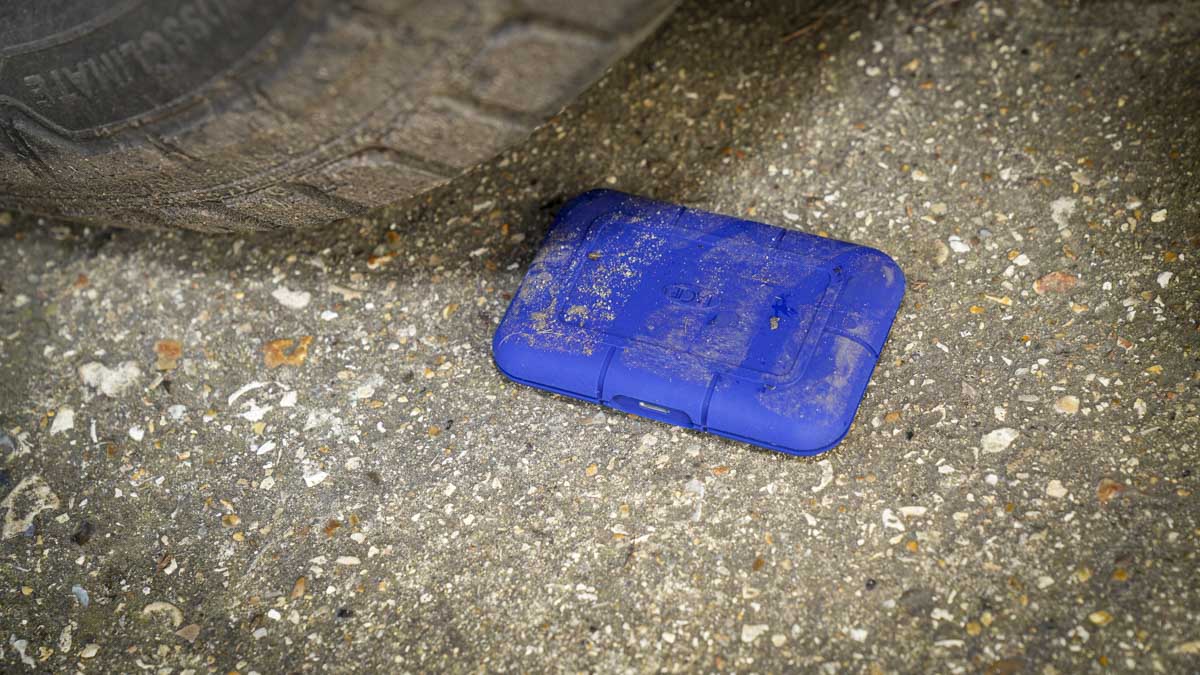
In my experience, the best rugged hard drives and SSDs has two core features: a durable design and quick transfer speeds. With that in mind, these are my top picks for robust storage solutions you can take with you in the field.
My team and I have tested an extensive range of HDDs and solid-state drives, including the best external hard drives, best external hard drive for Mac, and the best portable SSDs, alongside - but not all of them are suitable for harsh working environments and extreme weather conditions. What I want to see from a rugged drive is a solid IP rating that ensures the device and your files are protected from water, dust, shocks, and drops.
With that in mind, I find the LaCie Rugged Pro5 the best rugged hard drive for most users. It's IP68 rated and alongside its large storage capacity, in our tests we also found it delivered exceptionally fast transfer speeds for the cost. See the full review below, with alternatives for a range of budgets and uses.
And for more ruggedized devices, we've also thoroughly tested the best rugged laptops, best rugged phones, and best rugged tablets.
The quick list
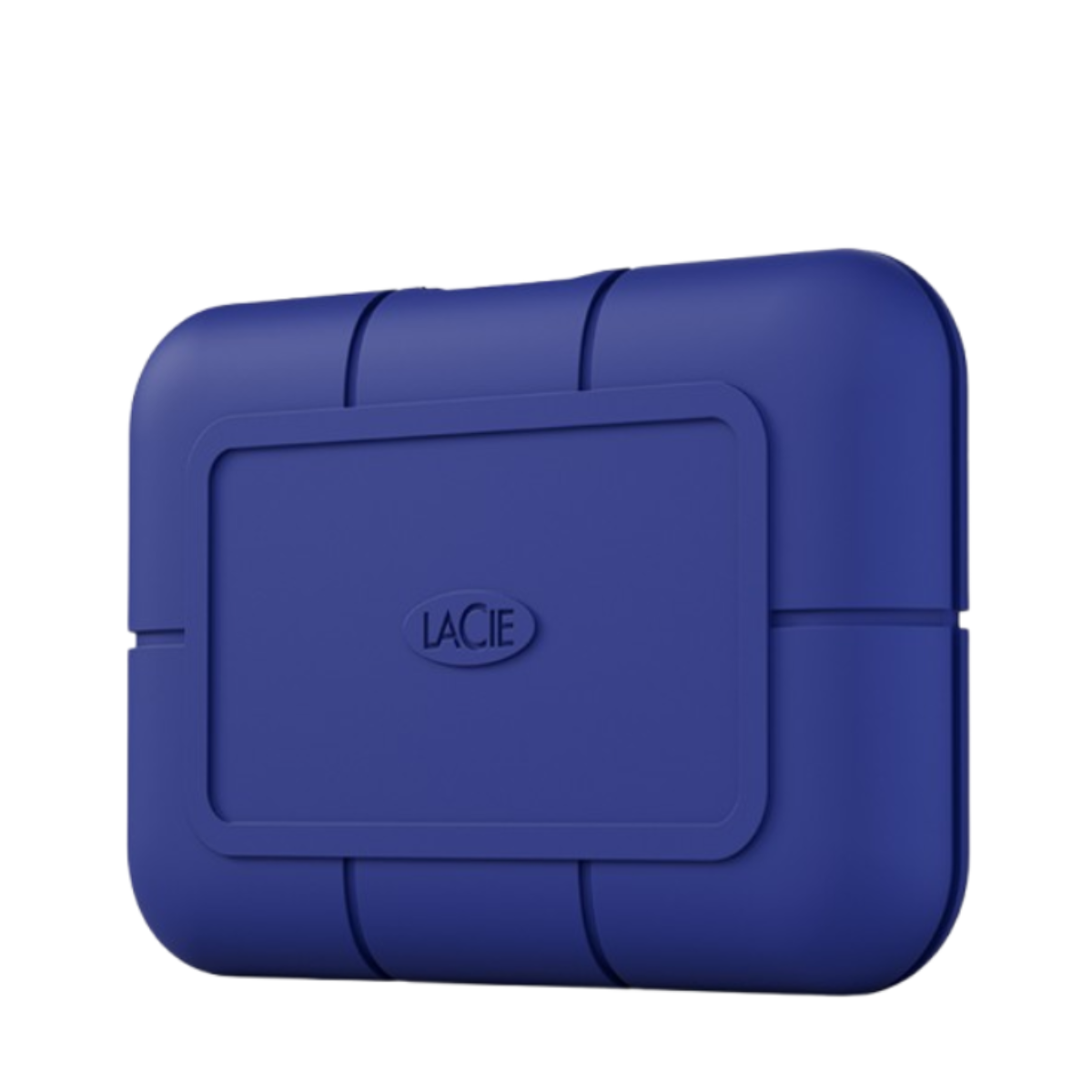
An exceptionally well-made rugged drive with rubberized skin, this SSD is IP68-rated and in our tests delivered fast transfer speeds. Available in 2TB and 4TB capacities.

The Silicon Power A66 stands out for its cost-effectiveness rather than performance, offering 5TB of rugged, portable hard drive storage at a significantly lower price than faster SSDs, making it a solid choice for outdoor use.
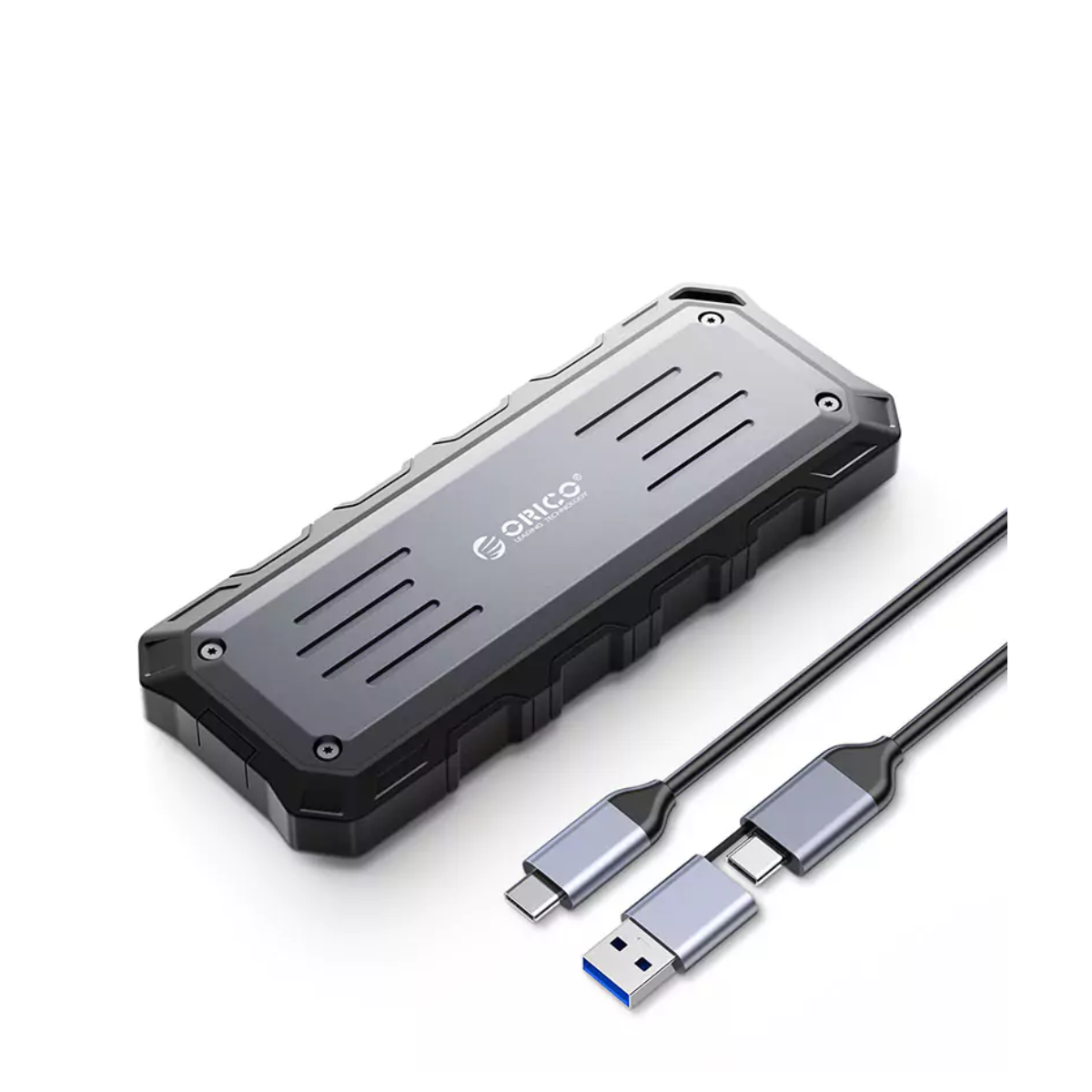
Ultra-fast and ultra-portable, this IP54-rated drive offered great transfer speeds when we tested it for performance. It's small, lightweight, with 512GB, 1TB, and 2TB capacities available.
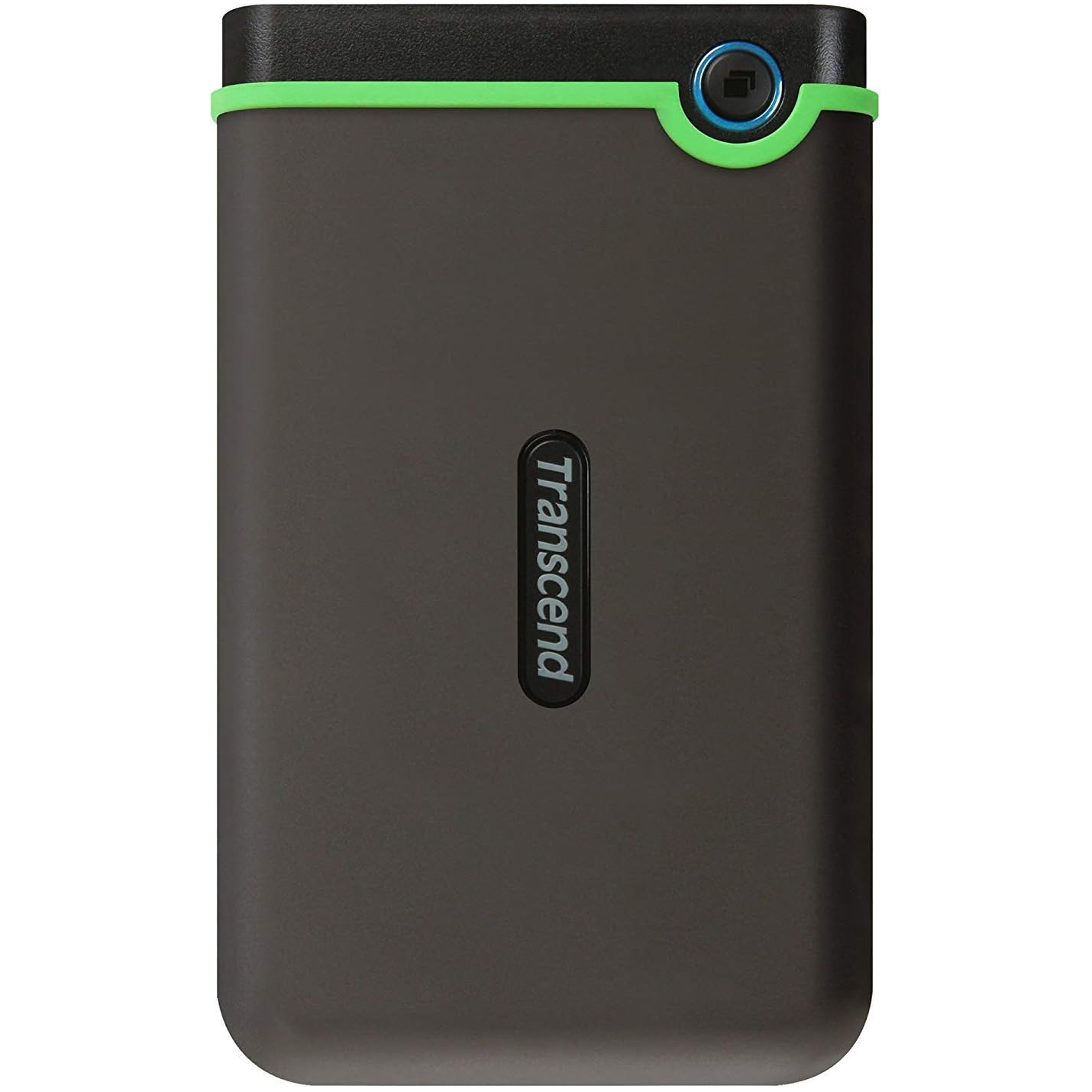
The Transcend StoreJet 25M3 rugged hard drive is well-protected with a silicone shell and reinforced case, meeting US Military drop-test standards. Ideal for travel, it features a quick reconnect button, USB 3.0 for fast transfers up to 5GB/s, and a convenient backup button.
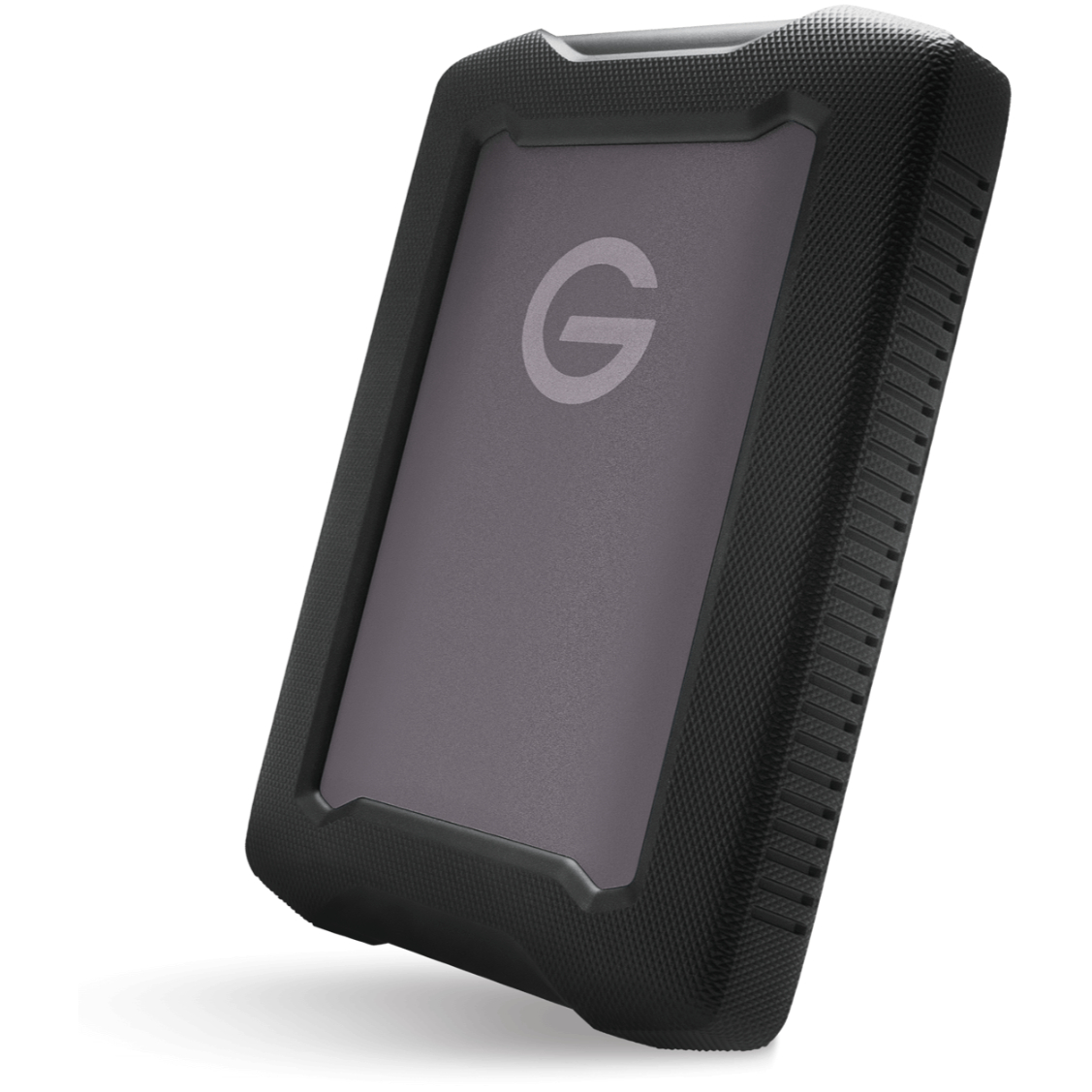
The G-Technology ArmorATD from Western Digital offers robust data protection with a rubber sleeve and aluminum enclosure, available in 1TB to 5TB sizes. It features three layers of shock resistance, can withstand up to 1000lb of crush force, and is rain and dust-resistant, though not fully waterproof.
Best rugged hard drive overall
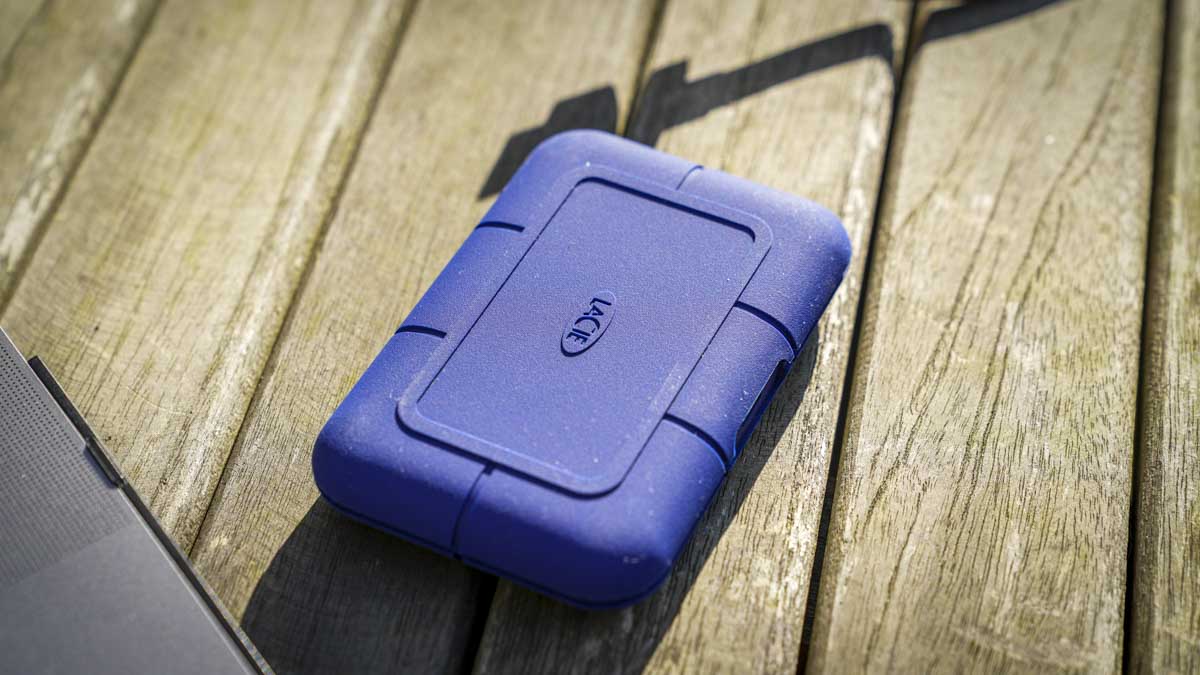
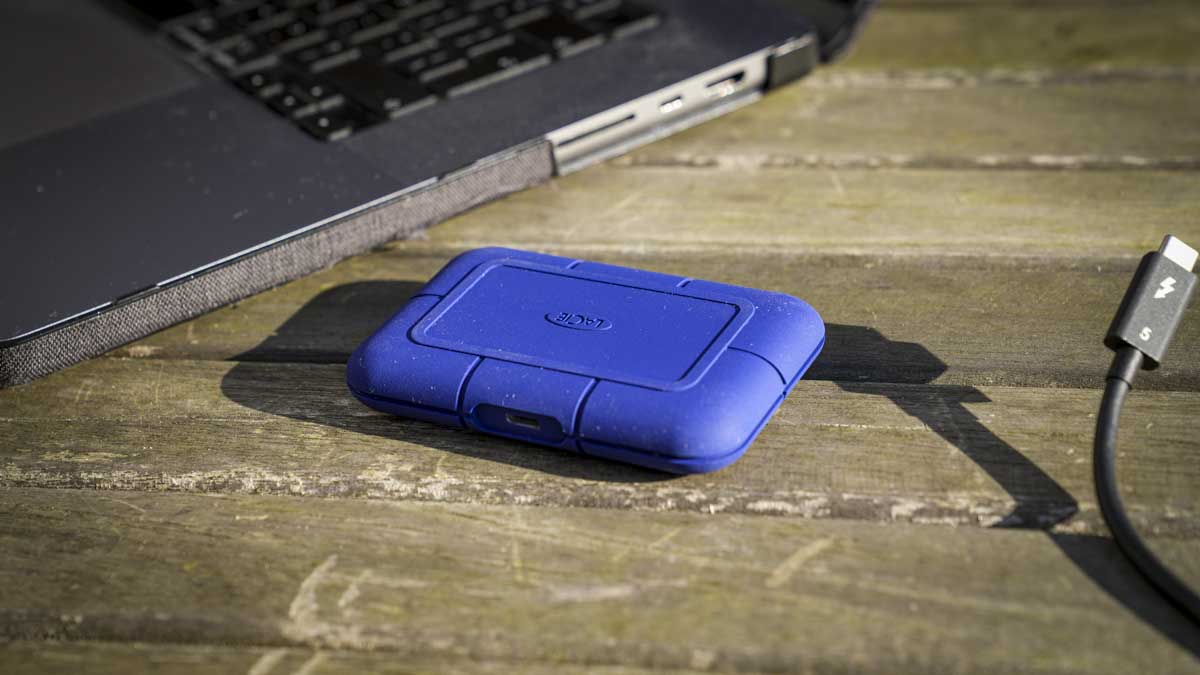

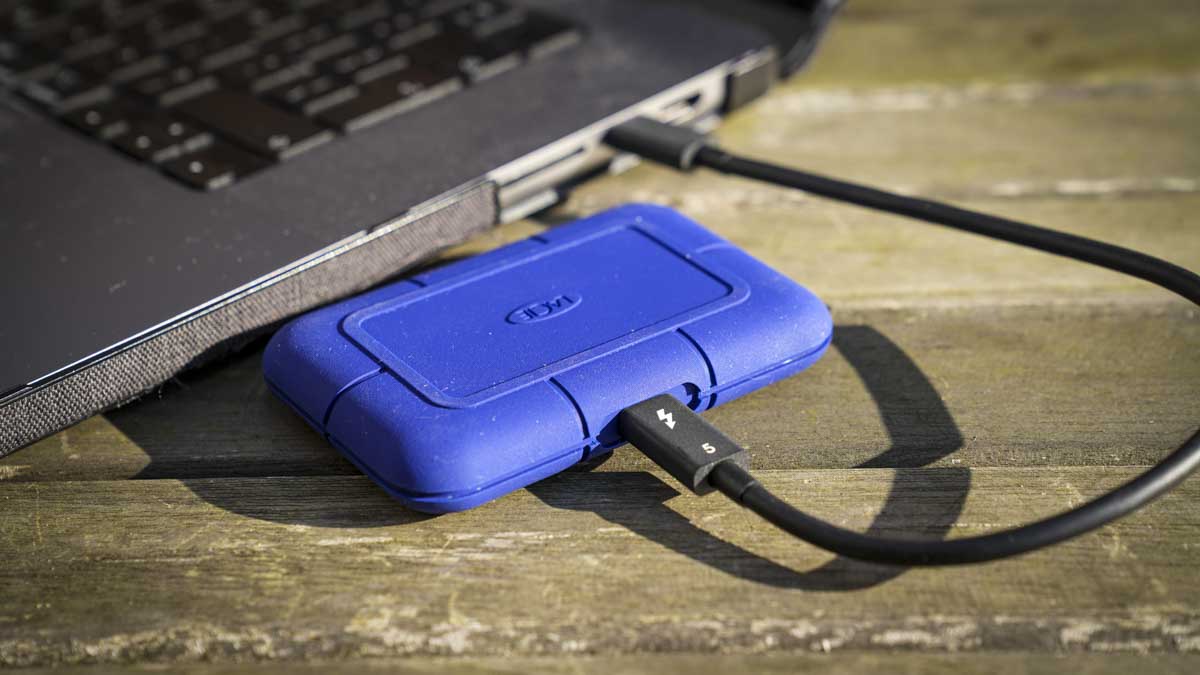

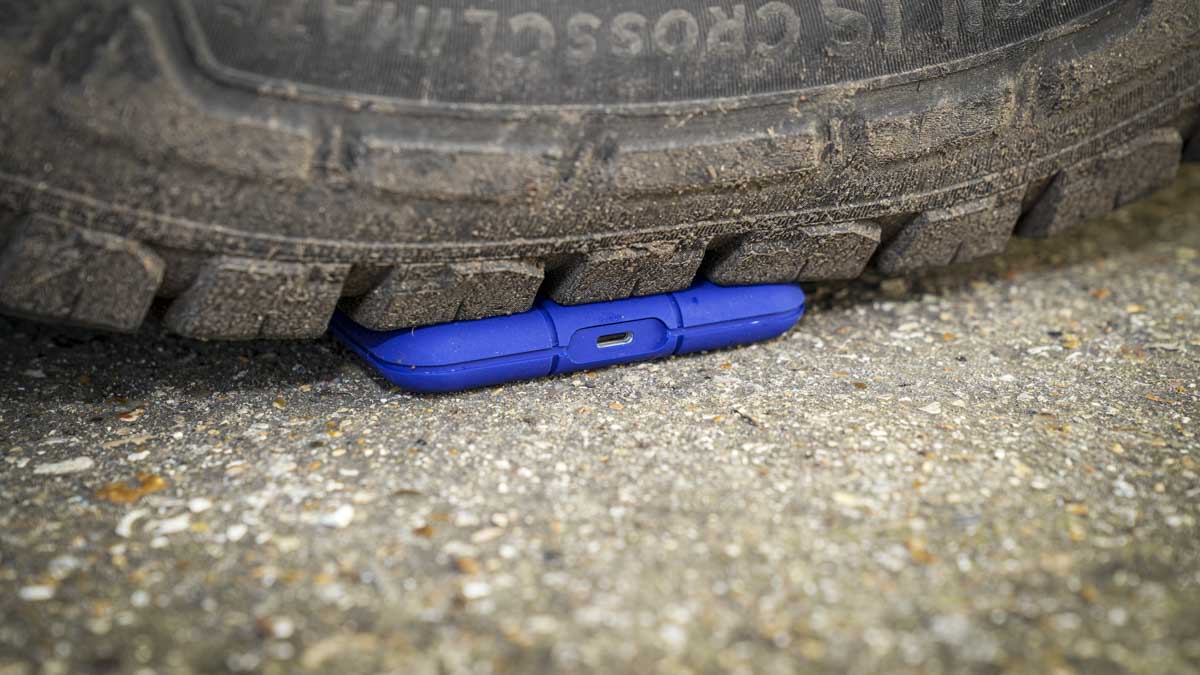
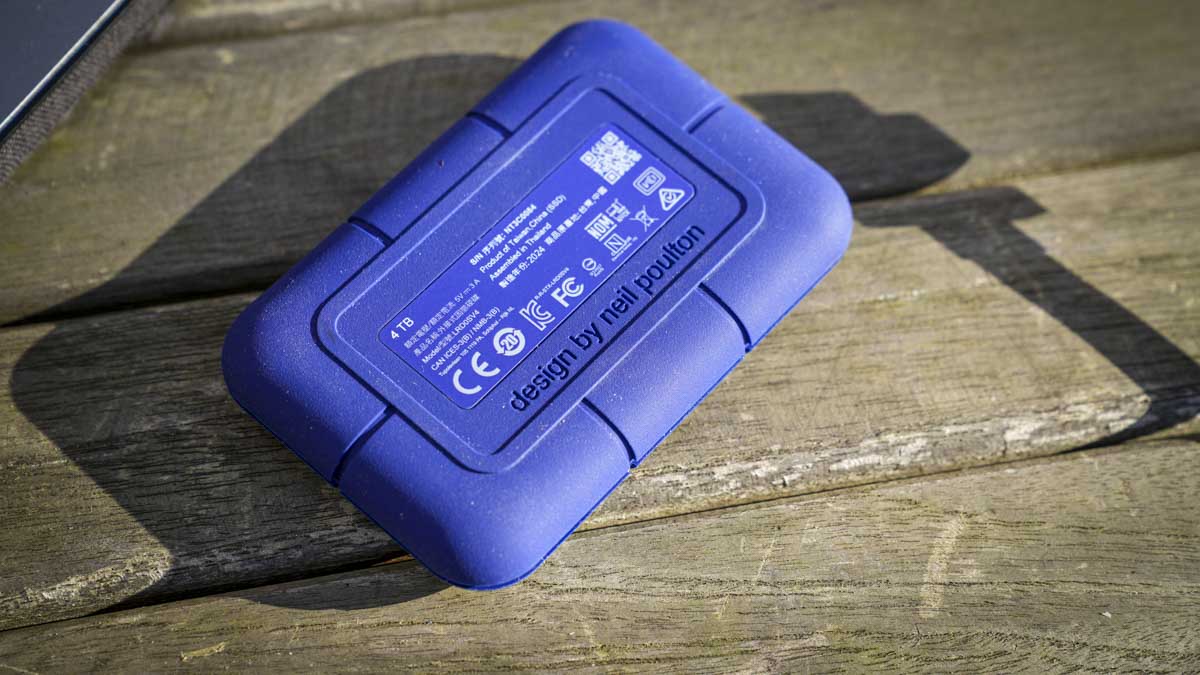
Specifications
Reasons to buy
Reasons to avoid
This rugged SSD took a heck of a beating during our tests - and it still came out on top. Not even getting crushed under the wheel of a car could stop it.
We've long been fans of LaCie's rugged drive line-up, and this one has to be our favorite. It's IP68 rated, meaning it's protected against water and dust ingress, and supports Thunderbolt 5, which makes it extremely fast when it comes to file transfers. In our tests, we clocked read speeds of 6,700 MB/s and a 5,300 MB/s write speed.
Design-wise, it's well-constructed, well-made, and even includes Velcro for adhering to the back of a monitor for safe-keeping. That's ideal for those constantly on the move, like photographers and videographers, and more. Besides that, it's small in size and we found it can be comfortably transported.
In fact, our only real complaint is that, with the rubberized skin, there's no easy way of applying labels - so, if you're using more than one, it can get confusing as to which drive holds specific files. We would've also liked to see a plug to protect the USB port.
Overall, though, this is an exceptional rugged SSD for those that need quick transfer speeds and a device that's protected against the elements.
Read our full LaCie Rugged Pro5 review
Best rugged hard drive on a budget
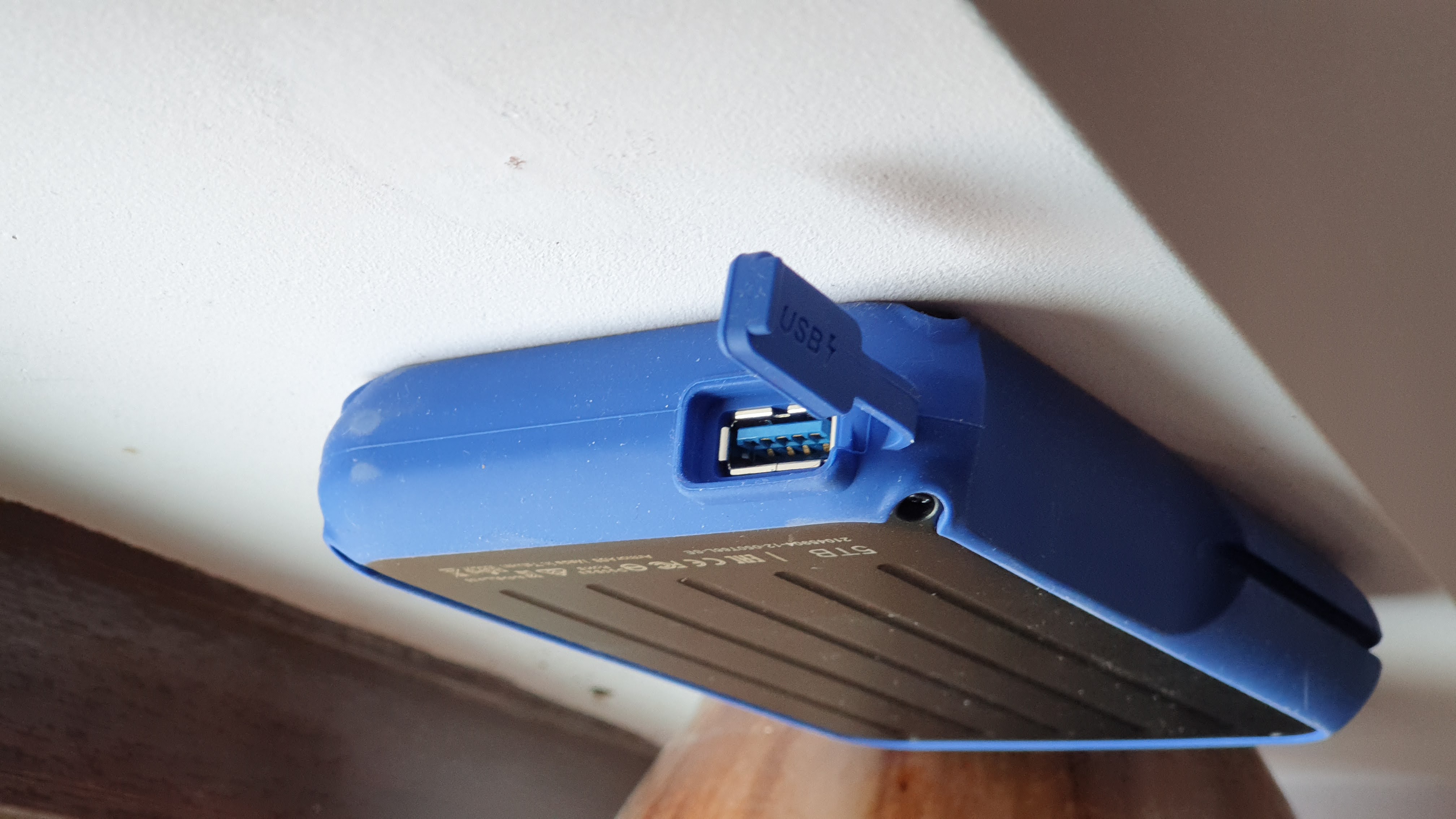
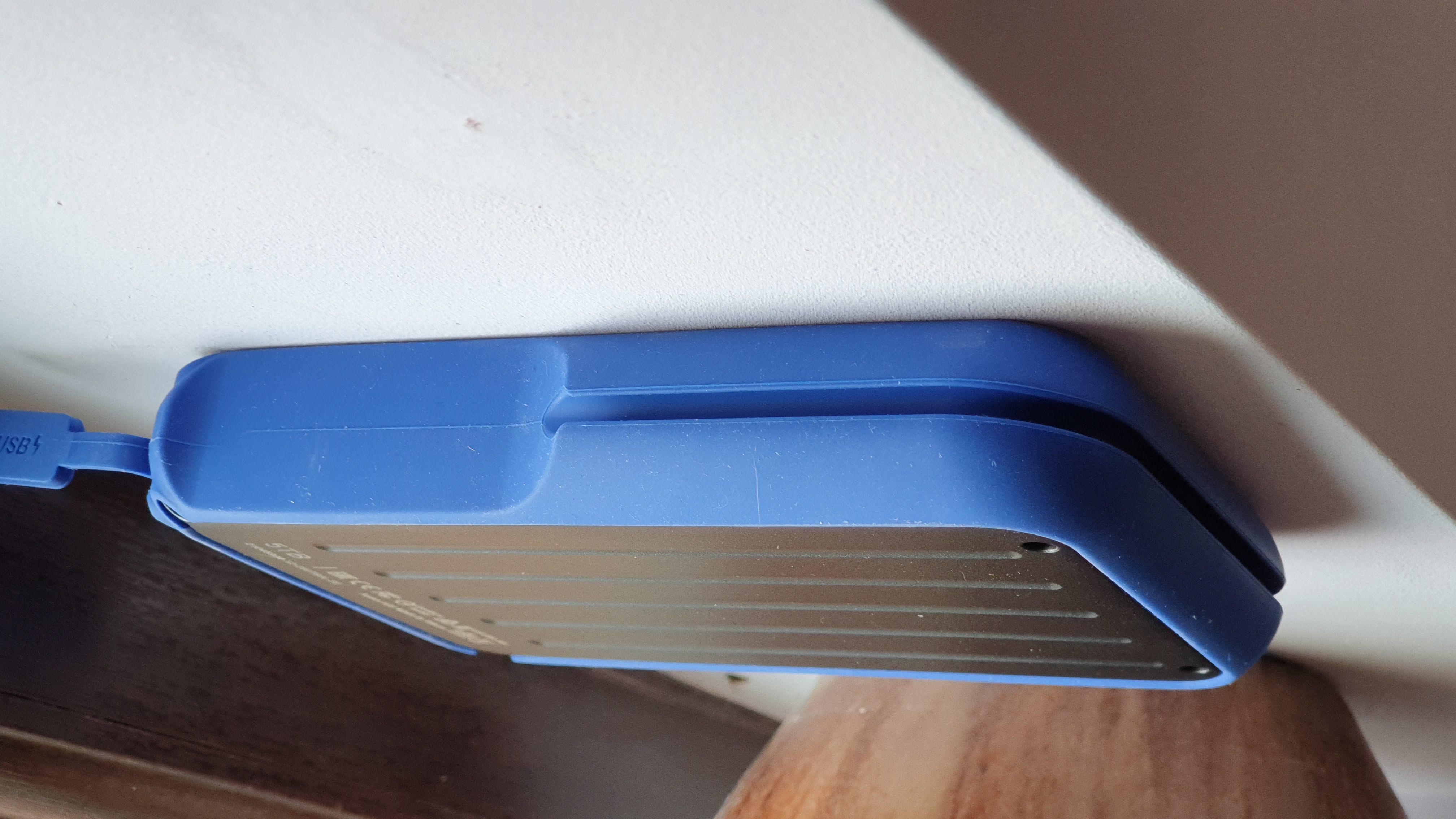
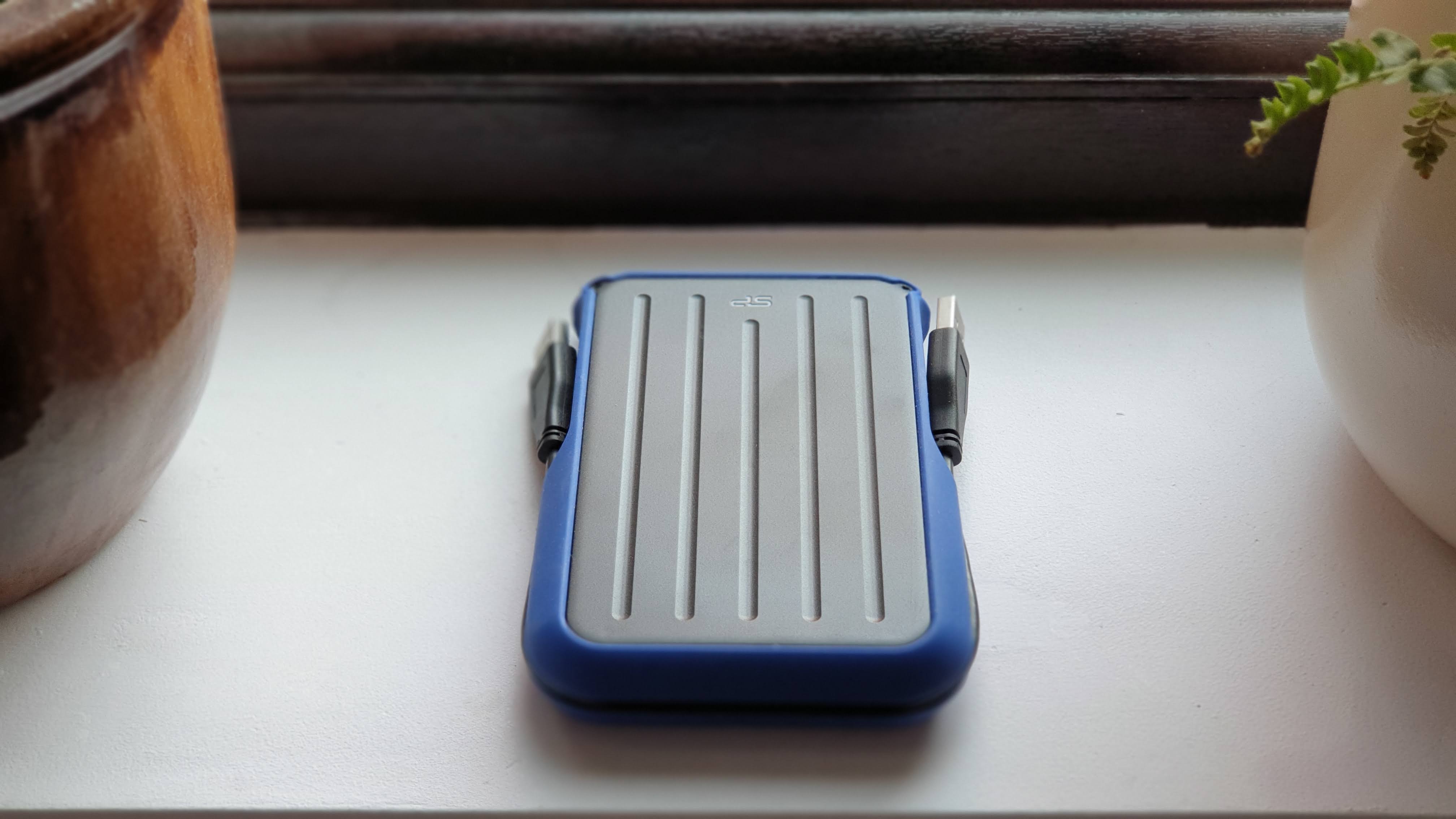
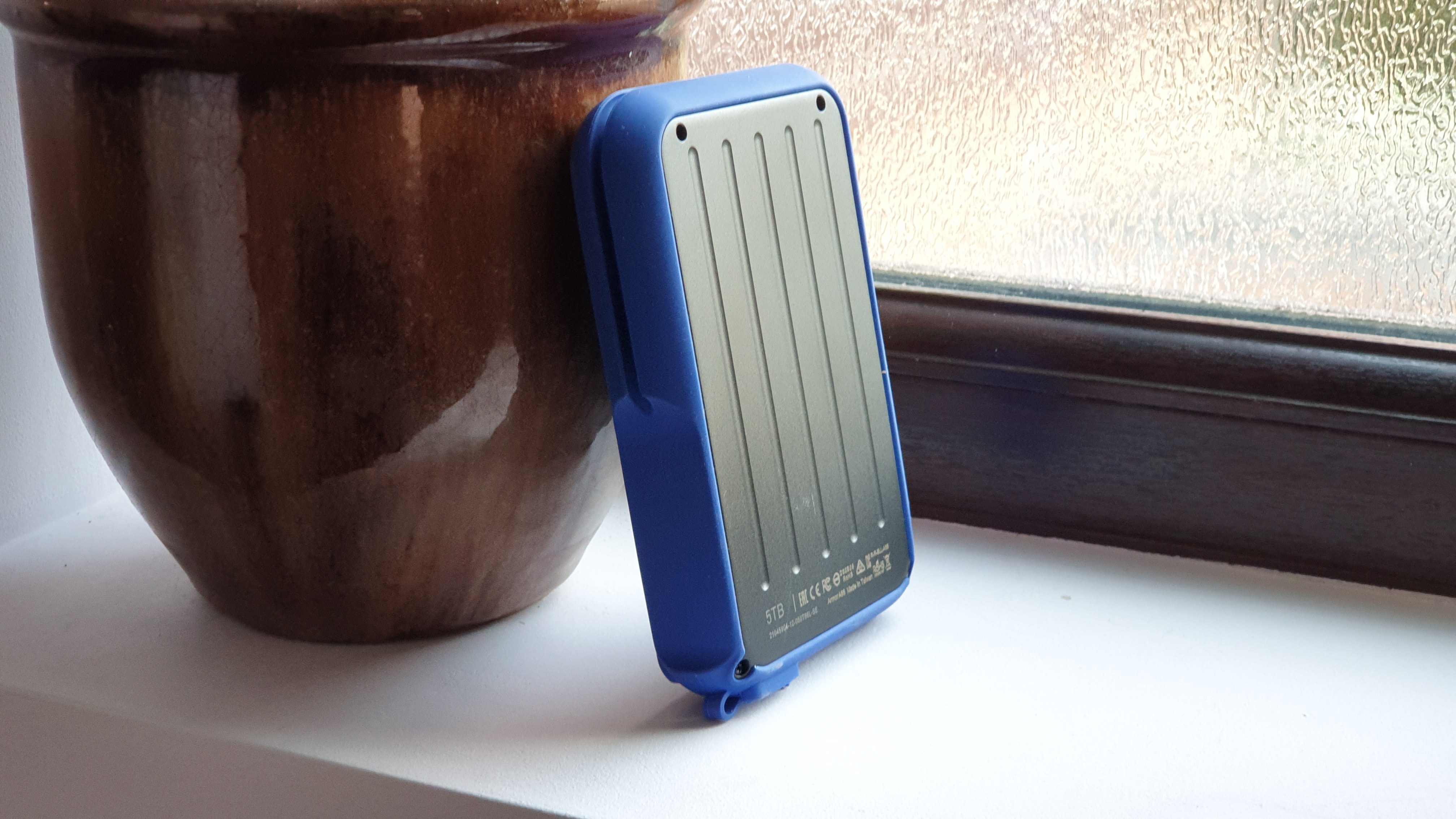
Specifications
Reasons to buy
Reasons to avoid
The Silicon Power A66 5TB portable, rugged hard drive nicely brings three critical attributes in anyone’s quest for storage perfection: It is significant. In terms of sheer capacity, it is relatively inexpensive compared to other rivals (like the Sandisk Professional G-Drive ArmorATD). It will protect your data better than most external hard drives if you don’t intend to immerse it in water (it is only IPX4 rated).
The A66 doesn’t come with any bundled software, and the cable it comes with is a special one (Type-A both ways, which makes replacing it problematic). In actual world tests, it performs in line with the rest of the HDD-based competition; expect to spend far more on a rugged SSD if you want something speedier, more resilient, smaller, and which can be used with a mobile device.
Read our full Silicon Power Armor A66 review.
Best rugged hard drive for water-resistance
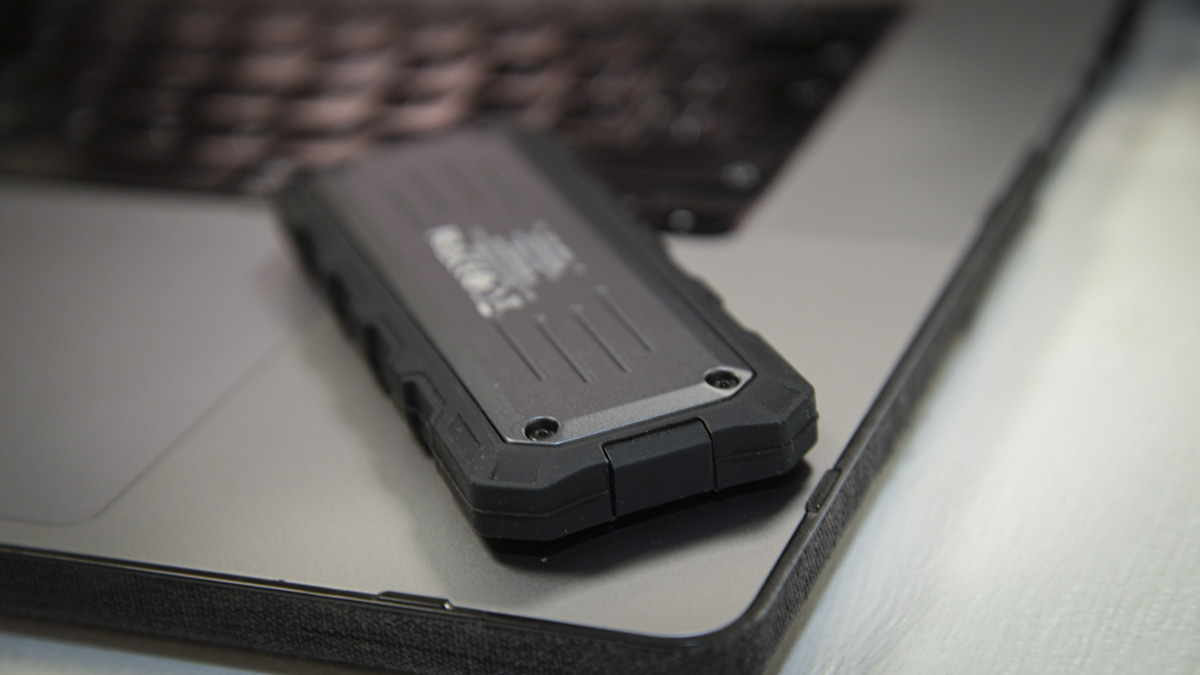

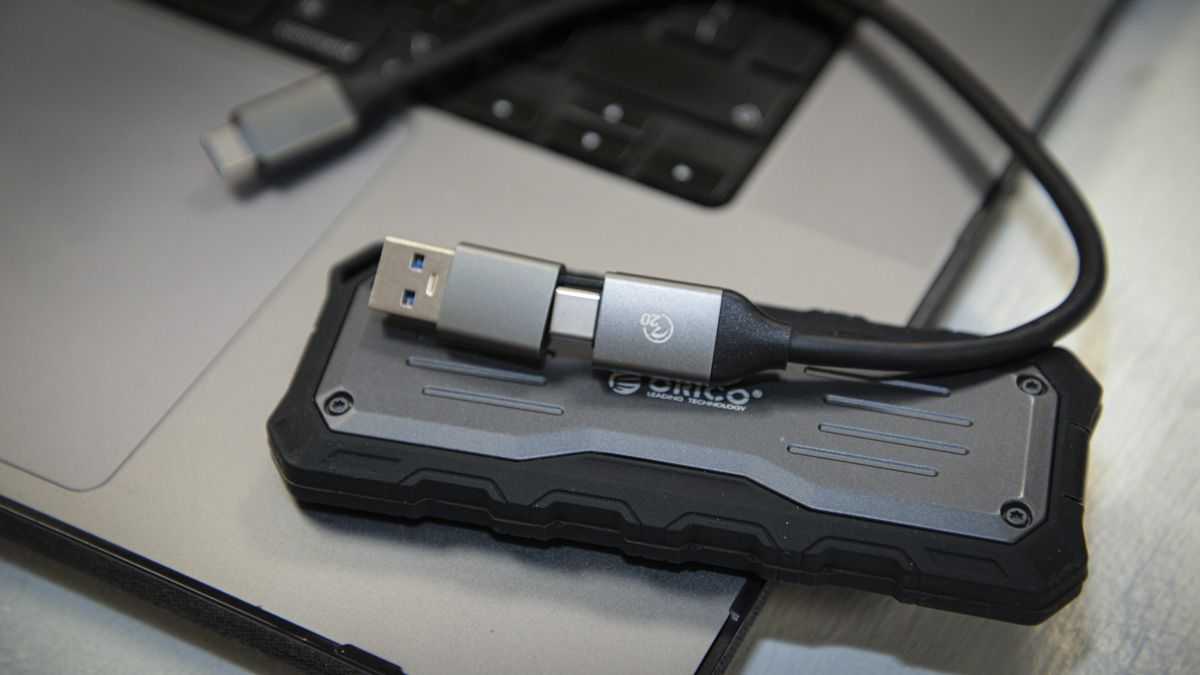

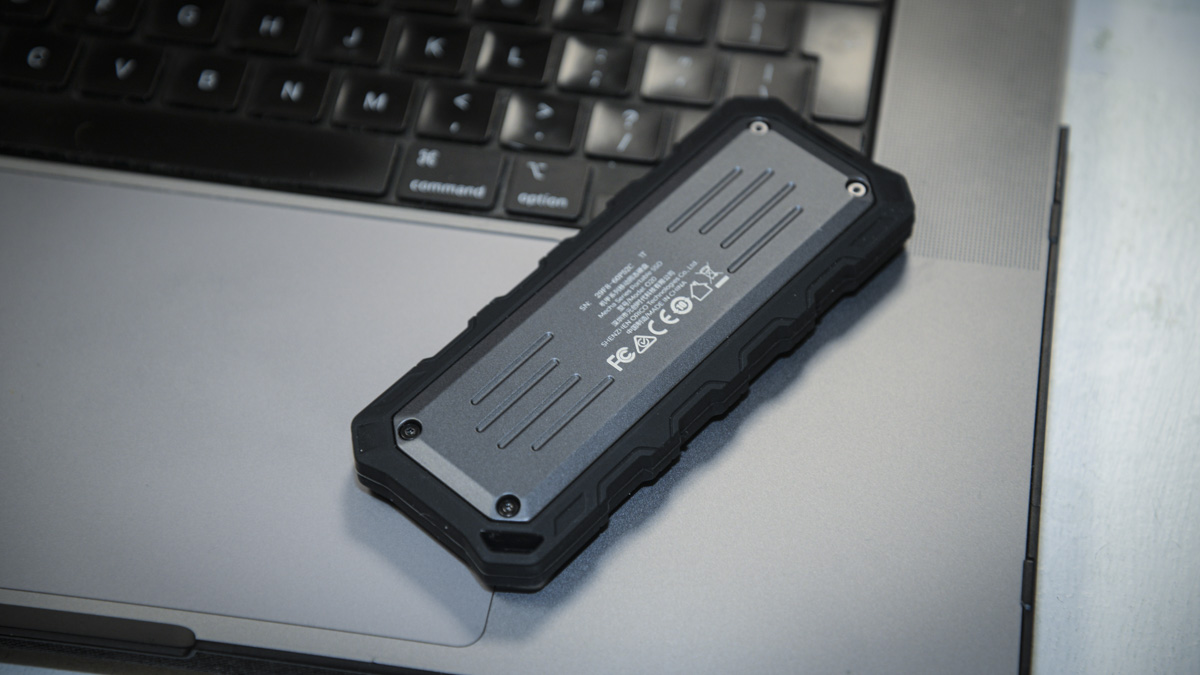
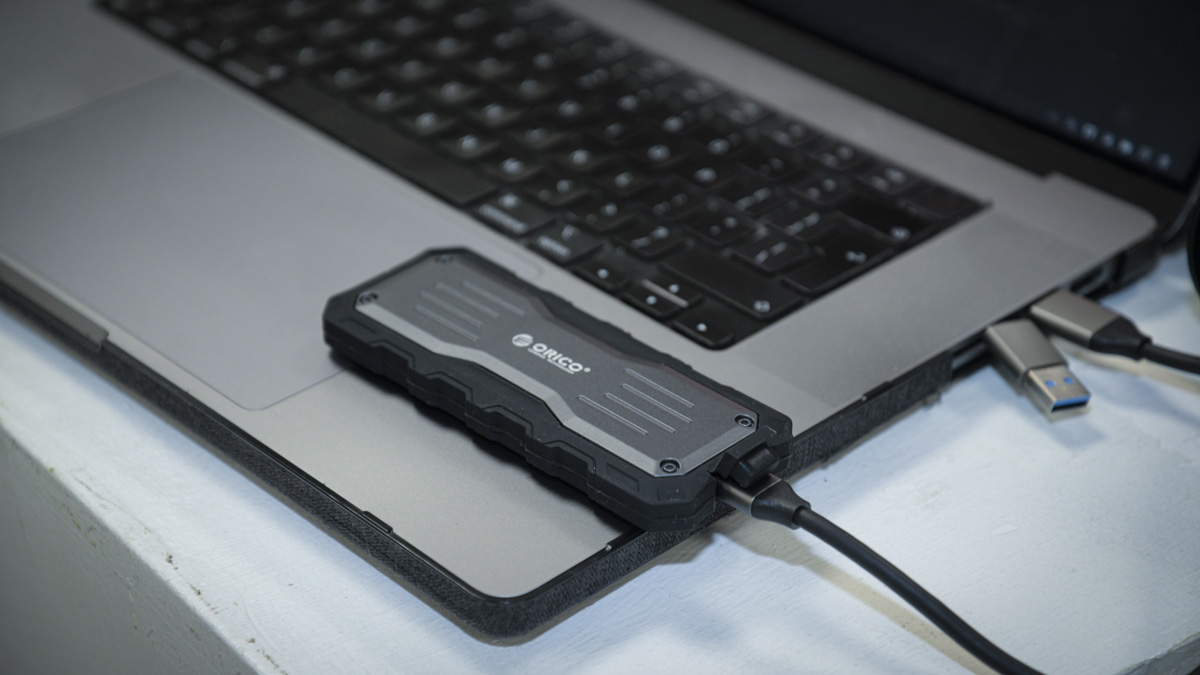
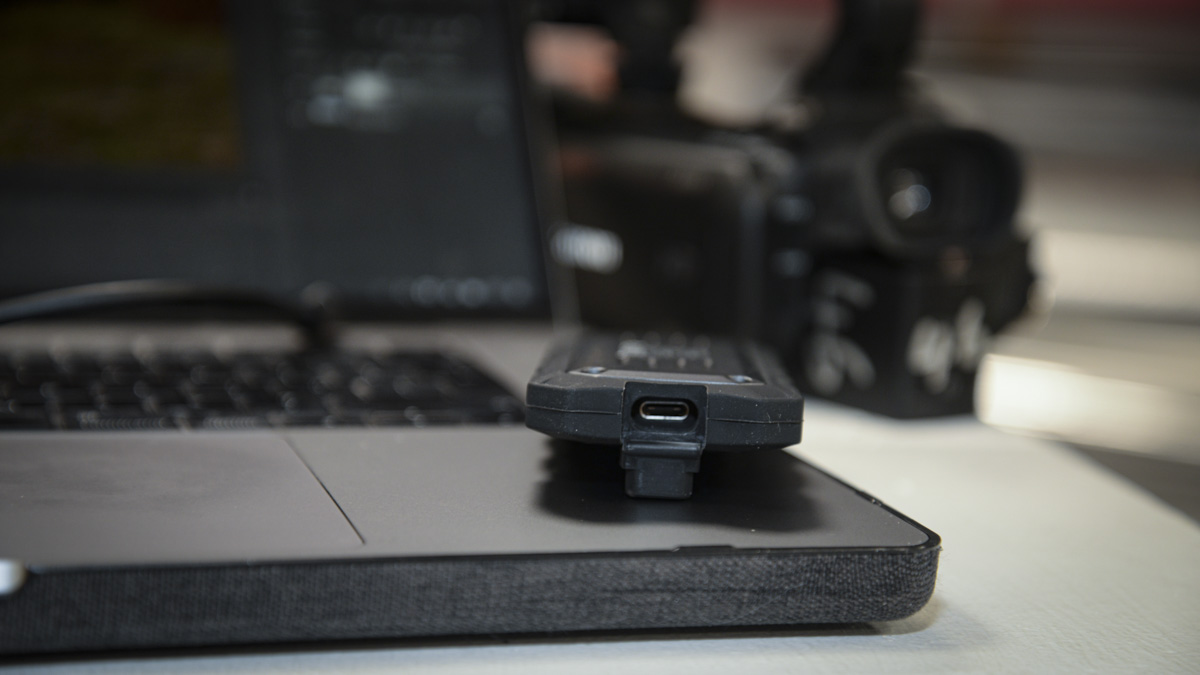
Specifications
Reasons to buy
Reasons to avoid
If you only need to protect your files from water, then you can't go far wrong with the Orico O20, which is IP54 rated and designed to be ultra-fast and ultra-portable. In other words, perfect for on-the-go storage for those not looking to give it a thorough beating.
In our tests, we found this rugged device performed exceptionally well, achieving 1929.69 MB/s read speeds in our benchmark tests, and a write speed of 1860.85 MB/s. However, using a Mac, we saw speeds plummet to around 1,000 MB/s. On PC, even when we conducted read/write operations that lasted over 30 minutes, the transfer rates hardly dropped at all. Part of these tests saw us using it with DaVinci Resolve, and it proved adept at handling 4K video files and high-resolution photo files.
While it is notably slim in design, it's still chunkier than a lot of non-rugged portable SSDs. Still, the IP54 rating means it's protected against shocks, dust, and it is water-resistant - so the trade-off feels fair. And it's still small enough to place in your pocket without weighing you down. It's powered by USB Type-C, with a USB-A adapter at one end. The port is, however, plugged, to further protect the device and your files when not in use.
Our only issue here is that, while transfer speeds are good, a USB 3.2 Gen 2×2 interface will be needed to reach top speed. However, even when we switched to USB 3.2 Gen 2, speeds were still fast, and most people won't be any the wiser.
Overall, if you just want a fairly rugged drive to take with you on the go, we wouldn't hesitate to recommend the Orico O20, especially considering the price.
Read our full Orico O20 review
Best rugged hard drive with USB 3.0
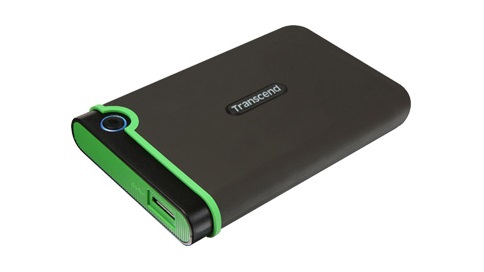
Specifications
Reasons to buy
Reasons to avoid
The Transcend StoreJet 25M3 is encased in three layers: a shock-absorbing silicone shell and a reinforced outer case. Like some of the others on the list of best rugged hard drives, it has also been drop-tested to US Military standards, and it shows.
This sturdy hard drive can take most knocks and drops - ideal if you often take your external hard drive traveling with you. It also has plenty of additional features, such as a quick reconnect button to ensure there arere no issues when you unplug it.
Moreover, the StoreJet 25M3's USB 3.0 compatibility gives data transfer speeds up to 5GB/s - comparable with internal drives. A 'back up button on the outer casing makes the process even quicker.
Read our full Transcend StoreJet 25M3 review.
Best rugged hard drive for crush resistance
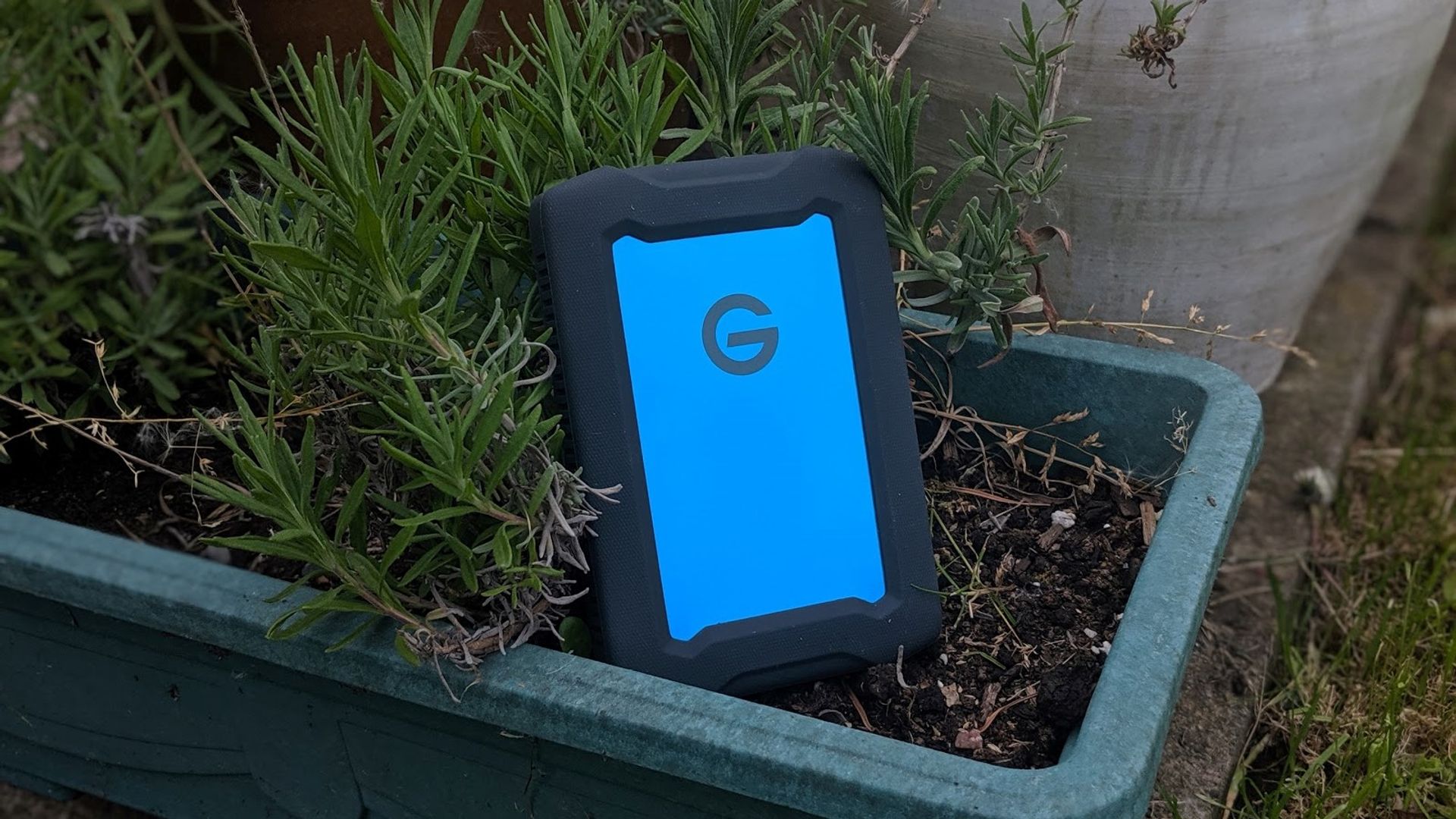
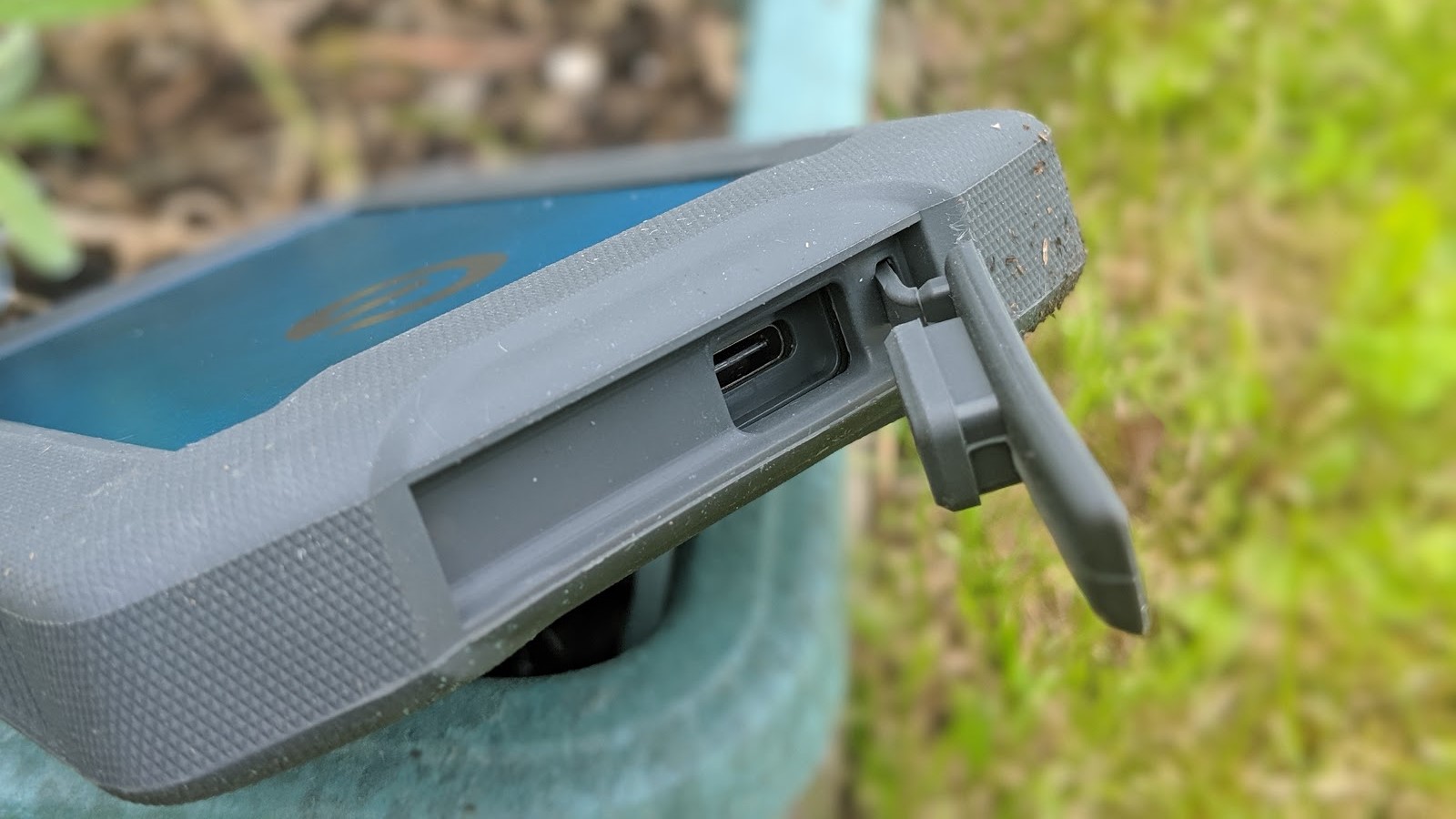
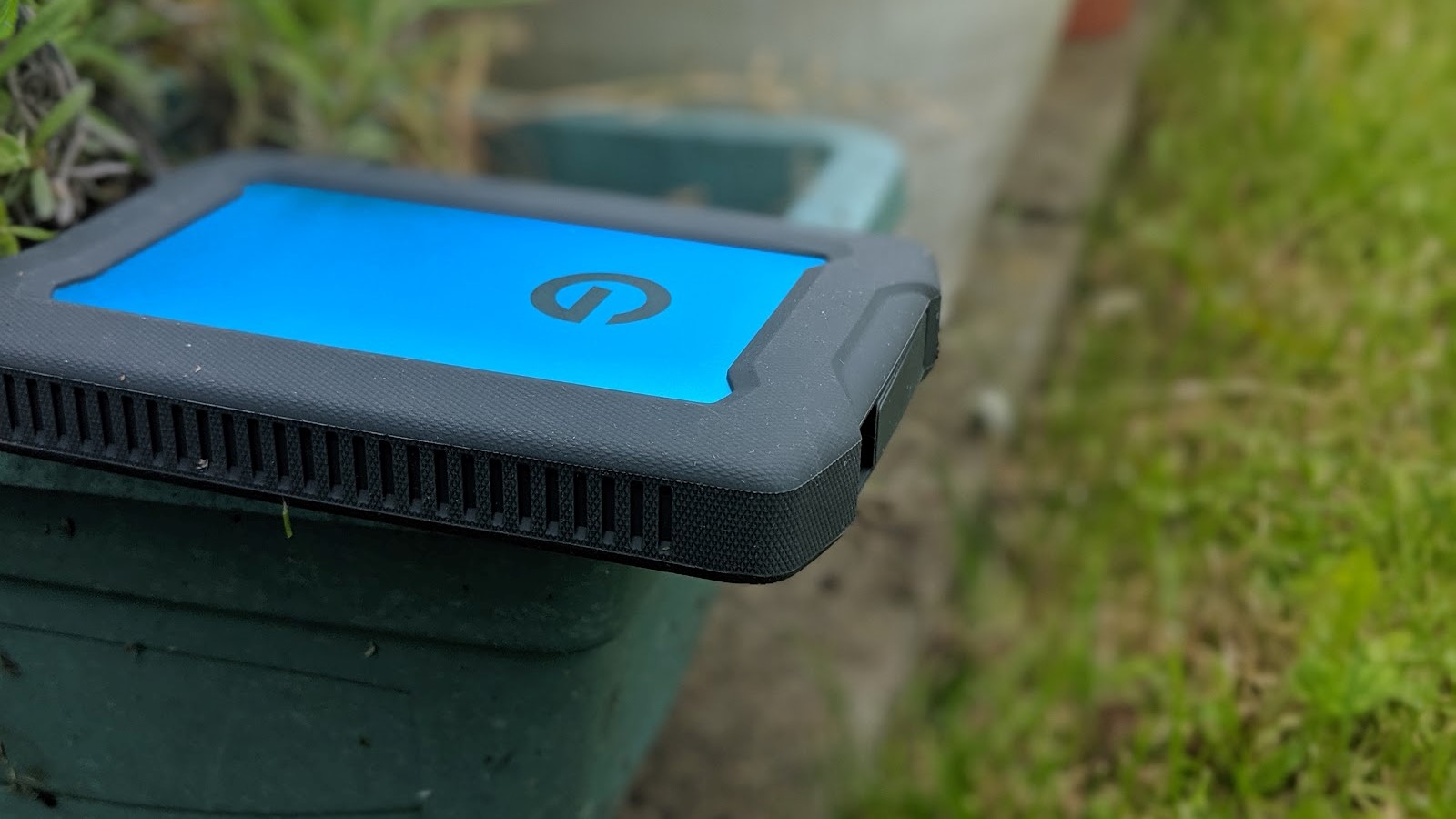
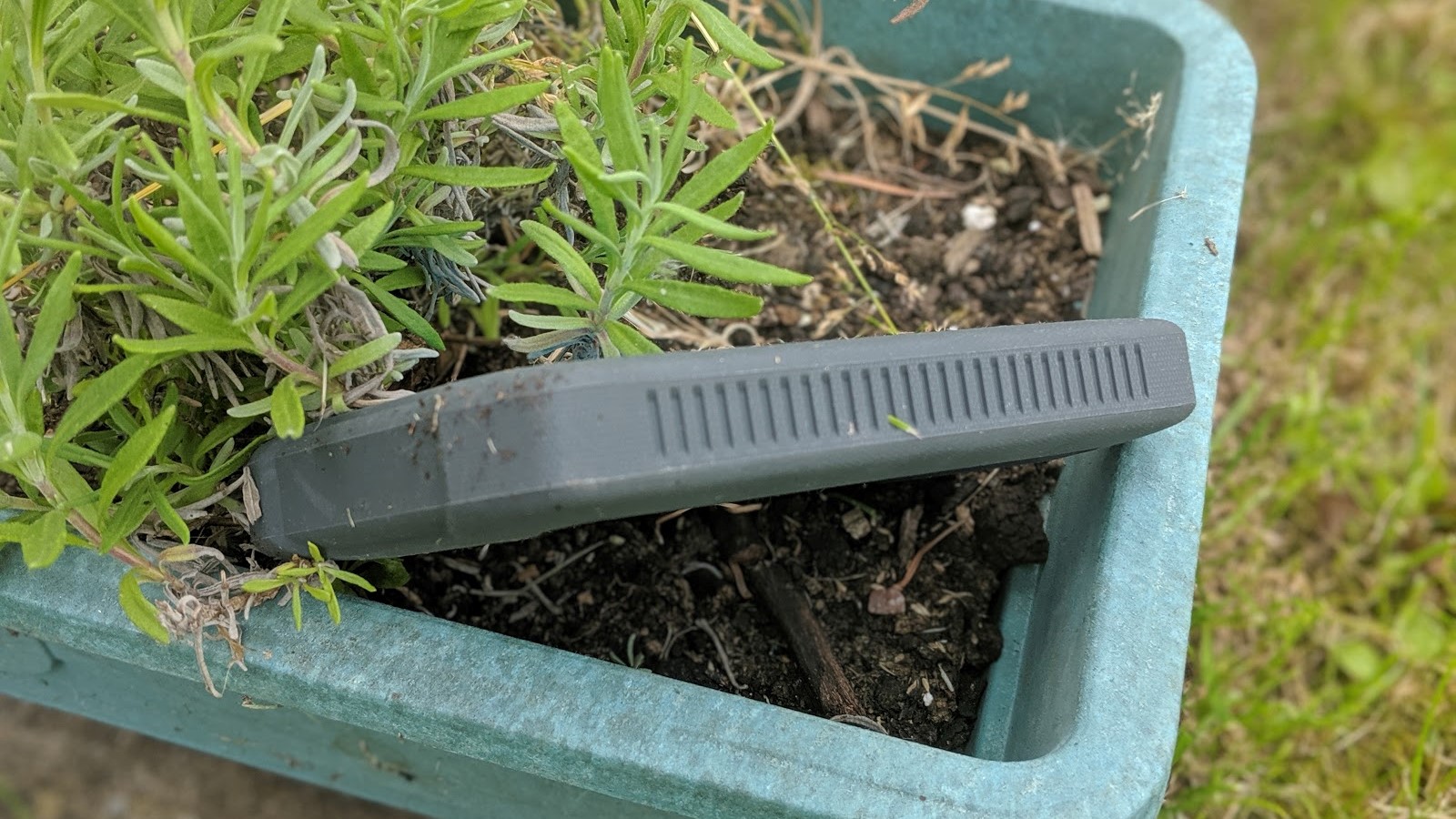
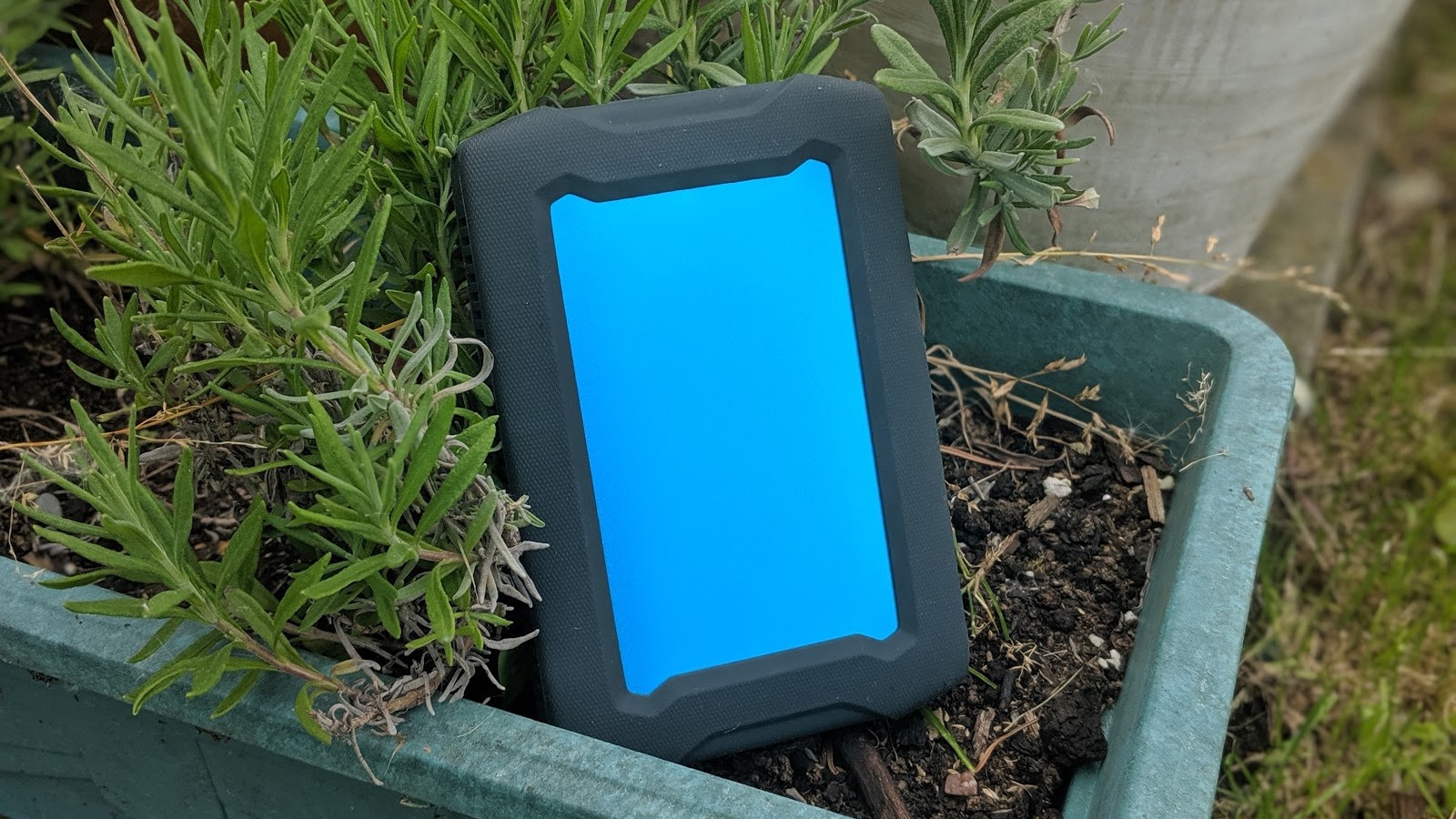
Specifications
Reasons to buy
Reasons to avoid
Western Digital’s G-Technology brand is no stranger to ensuring that your data is kept safe, and G-Technology ArmorATD does so by offering several layers of physical protection.
It features a rubber sleeve and a solid aluminum enclosure and is available in 1TB to 5TH versions. It boasts three layers of shock resistance and is crush resistant for up to 1000lb weight, making it a top companion for anyone who’s always out battling the elements.
The small print shows that this is valid for drops of up to 1.2m on a carpeted concrete floor for 1TB and 2TB capacities and up to 1m on a carpeted concrete floor for 4TB capacity. The latter has more platters which makes it a bit more fragile. Note that while it is rain and dust-resistant, it is not IP68, so don’t take it swimming with you.
Read our full G-Technology ArmorATD review.
The best rugged hard drive: FAQs
What is a rugged hard drive?
Rugged hard drives are like regular portable or external hard drives except that they are far more resistant to damage that would otherwise take a normal portable storage device out of commission. These devices are meant for extreme terrain and conditions, like construction sites, remote science outposts, and for military and paramilitary use. While you could use a rugged hard drive like a regular consumer device, rugged devices are usually more expensive owing to their many layers of extra protection and testing requirements.
Why are SSD so expensive?
Anthony Spence, Marketing Specialist at Silicon Power, answers this question
Solid state drives can seem expensive because they are costly to produce and have to compete with other components for production lines. One way of reducing cost has been to increase the number of bits per cell.
This is a surefire way to reduce costs and increase capacity but it has considerably negative effects on performance, reliability and endurance, the latter being super important if you want to use your drives for Chia farming or as NAS drives.
Each additional bit makes it more time consuming to read and write from a cell, voltage needs also grow and so does power consumption. With higher voltage comes higher temperatures, which facilitate a phenomenon called electron leakage and might lead to data corruption.
Furthermore, every bit added to the cells increases the need for comprehensive error correction technologies. These solutions contribute to the maintenance of good data integrity, however they do so at the cost of higher latency and lower random performance (usually measured in IOPS).
Despite the drawbacks mentioned, the sizable reductions in terms of costs and an ever growing storage capacity make up for a fair trade off. Nowadays, most consumers can gain access to the blazing fast speeds of SSDs at very low price points, with in some cases prices starting from well under $100 for nearly 1TB (e.g. the Silicon Power PC60).
It is important to remember that NAND cells aren’t the only element that has an effect on flash performance, things like the interface being used, over-provisioning (dedicating a portion of the available storage to the controller), SLC caching, controller, inclusion of DRAM, among others also play an important role.
As most purchases, in the end it all boils down the consumer and its specific needs. Just as QLC wouldn’t make the cut for a 5G provider looking for storage options for their base stations, SLC solutions would be overkill for the average consumer.
How to choose the best rugged hard drives for you
Although it may seem daunting trying to pick the best rugged hard drive from such a vast selection, there are three simple ways to narrow down the field.
Firstly, begin with budget. After all, if you've a set cost in mind you're not willing to spend a penny over, there's little point looking too deeply at devices that cost three times as much.
Once this has whittled down your choice, decide just how much storage you're going to require. If you're, for example, a full-time photographer or filmaker who regularly needs terrabytes of storage to backup your work on while out in the field, you'll need to look at the options that provide at least 1TB or 2TB of storage, possibly more.
Lastly, consider how and where you'll typically be using your hard drive. Presumably you're on the hunt for a robust and rugged version because you're either constantly on the move, working in the outdoors, or are just particularly clumsy. But does it need to be dust-resistant? Will it regularly be exposed to water? Consider these factors before making your choice on the best fit for you.
How we test the best rugged hard drives
In order to make our selection of best rugged hard drives we took several key factors into consideration. Cost was chief among them, or rather, value, as we judged which hard drives offer the most for their price.
As well as looking at each device's specs - such as storage capacity, portability, ease-of-use, connectivity options, and platform compatibility - we wanted to properly test the main selling point of each hard drive: its ruggedness. After all, if you're on this page, you're hunting for something that's going to last, even when severely tested.
And so we road-tested just how tough these hard drives are, analysing water and dust resistance, shock and drop proofing, and whether they boasted standardised certifications (such as IP68).
Get in touch
- Want to find out about commercial or marketing opportunities? Click here
- Out of date info, errors, complaints or broken links? Give us a nudge
- Got a suggestion for a product or service provider? Message us directly
- You've reached the end of the page. Jump back up to the top ^
Are you a pro? Subscribe to our newsletter
Sign up to the TechRadar Pro newsletter to get all the top news, opinion, features and guidance your business needs to succeed!

Steve is B2B Editor for Creative & Hardware at TechRadar Pro. He began in tech journalism reviewing photo editors and video editing software at Web User magazine, and covered technology news, features, and how-to guides. Today, he and his team of expert reviewers test out a range of creative software, hardware, and office furniture. Once upon a time, he wrote TV commercials and movie trailers. Relentless champion of the Oxford comma.